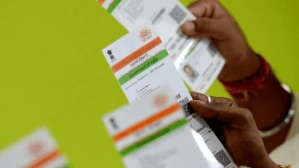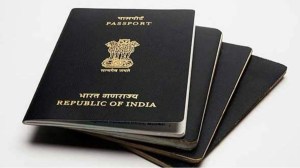Just chew on this—over a fifth of the male population in India (22.9%) reported consuming alcohol in 2019-2021, as per the fifth National Family Health Survey (NFHS-5) conducted by the Union ministry of health and family welfare. While the figure may sound alarming, it actually marks a noticeable decline from the previous percentage—29.2%— reported by NFHS-4 in 2015-16.
Among Indian women (15-54 years), the use of alcohol showed a decreasing trend as well, if not by a huge margin— from 1.2% in 2015-16 (NFHS-4) to 0.8% in 2019-21 (NFHS-5).
Globally, too, the trends reflect a marked shift. In the US, for instance, 54% of the adults polled by Gallup this year said they drink alcohol—the lowest in the global research and management consulting firm’s 90-year history of tracking Americans’ drinking behaviour. The previous figures were 62% in 2023 and 58% in 2024. The steepest drop was apparently seen among the younger populations, the survey notes.
And it’s not just with hard liquor. In Germany—best known for Munich’s Oktoberfest—beer consumption has been on a steady decline over the years. From almost 143 litres after the fall of the Berlin Wall in 1989, it now stands at an average of 88 litres per capita a year, as per reports. In Oktoberfest itself last year, visitors consumed 6.5 million litres of beer, down from 7.3 million litres in 2019.
For years, alcohol use has been seen as an ‘emerging public health concern’, but now, it seems, the course is changing.
Evolution in drinking habits
Many countries with high penetration of alcohol consumption are now seeing declining trends. Vinod Giri, an industry expert and director general of the Brewers’ Association of India, says these countries may be attaining saturation level of alcohol penetration, and hence the downward shift. “Some of this also may be due to the rising awareness of the health risks associated with excessive high alcohol consumption. Move by the OECD (Organisation for Economic Co-operation and Development) countries, such as the UK, and the EU, to start taxing alcoholic beverages as per the alcohol content in the product, or ad quantum taxation, in order to nudge consumers towards lower alcoholic content products may also be a reason,” he explains.
Maj Gen Rajesh Chopra (retd), director general of the Indian Malt Whisky Association (IMWA), an industry body, feels that economic considerations also play a role. “Rising prices, higher taxation, and stricter regulations have made consumers more discerning in how they allocate their discretionary spend, and alcohol is no exception,” he says. “Additionally, the broader wellness movement, amplified by social media and evolving lifestyle aspirations, has encouraged moderation and mindful drinking.”
Leading this ‘sober-curious’ movement is the younger demographic, particularly Gen Z. A study by Germany-headquartered Berenberg Research found that Gen Zs are actually drinking 20% less per capita alcohol than millennials did in their late teens and early 20s, with 64% adding they expect to drink less in their adult life than older generations. Another study by the University of Michigan and Texas State University in the US found that the number of adults aged 18-22 years in the US who abstained from alcohol increased from 20% to 28% between 2002 and 2018.
As per a 2022 report by the Food Institute, a platform for food industry news, data and trends, a focus on health and wellness are key motivators for limiting or reducing alcohol across adults of all ages. The report cited improving health (47%), managing weight (38%), reducing risk of disease (25%) and avoiding a hangover (23%) as some of the reasons for the same. Factors like alcohol being labelled a major carcinogenic act as major deterrents too.
“Young consumers, especially millennials and Gen Z, are leading this shift. They’re curious, willing to try new formats like craft spirits or ready-to-drink options, but at the same time, they’re more mindful and selective about what they consume,” says Varna Bhat, founder of homegrown alco-bev company Blisswater Industries.
Not ditching the bottle, just yet
Incidentally, while the proportion of persons reporting alcohol use in India has decreased over the years, the amount of alcohol consumed by those who drink has actually increased. A Global Status Report on Alcohol and Health by the World Health Organization (WHO) in 2018 estimated a 38% increase in per-capita alcohol consumption among individuals aged 15 years and above in India during the period 2010-2017.
And the market figures speak for themselves. Against a backdrop of a 1% volume growth for global total beverage alcohol in 2022, spirits volumes in India increased by 12%, with beer rising by 38%, wine by 19% and RTDs by 40%, according to IWSR, a global authority on beverage alcohol data and intelligence. IWSR forecasts suggest a continued upward trajectory, going forward.
This means, according to Shalini Sharma, head of marketing, Piccadily Agro Industries, an independent manufacturer and seller of malt spirits in India, fewer people may identify as “regular drinkers,” but those who do are choosing quality over quantity, and are often willing to spend more per bottle or per occasion. “This shift highlights that while the base of drinkers may be consolidating, the per-capita consumption within premium and craft segments is on the rise,” she adds.
“The growth in India is likely being driven by two important factors—the demographic advantage that continues to bring millions of new consumers into the market every year, and a rising appetite for premium and high-quality experiences created in India,” says Vikram Achanta, founder and CEO of Tulleeho, an Indian beverage education, training and consulting services provider, and co-founder of 30BestBarsIndia and India Bartender Week.
India’s alco-bev market has shown remarkable resilience and growth, making the country one of the largest whisky-consuming markets globally, says Chopra of IMWA, adding: “It is pushed by increasing per capita consumption of alcohol, growing urban drinking population, and changing lifestyle choices. Customers are going for premium and craft spirits increasingly, fuelled by increased disposable income.”
According to Chopra, this expansion is also part of a comprehensive trend towards modernisation in India’s alcoholic beverage market, with more focus on quality, brand selection, and organised retail. “With rising consumer awareness and exposure to international trends, demand for innovative and premium products will continue to increase further, supporting India’s status as a leading force in the global alcoholic beverage sector,” he adds.
Spending more, drinking less
India’s alco-bev culture is shifting, from quantity to quality—and consumers aren’t just drinking, they are drinking better. Once known as a price-sensitive market, India is now pivoting towards a niche, premium direction.
“Rising incomes, education, and social awareness drive discernment in product basket, people start moving from products delivering purely functional benefits towards products that speak for them, their personality and their position in society. Premiumisation is a natural manifestation of that up-trading,” explains Giri of Brewers’ Association of India.
“Premiumisation is not a passing phase; it is reshaping how consumers think about alcohol,” says Hasan Bakhtawar, chief operating officer, cased business, Angus Dundee India, a single malt whisky producer. “The Indian consumer today values refinement, storytelling, and craftsmanship in spirits. This creates headroom for categories like single malts, aged blends, and specialised cocktail spirits. Premiumisation is also a function of identity; choosing a drink is as much about self-expression as taste,” he adds.
“More exposure, greater care of what we consume coupled with a willingness to spend more on quality has helped create that strong growth engine in the country,” says Kimberly Pereira, chief operating officer of Maya Pistola, a premium Indian craft agave spirit brand. “People no longer want to consume just anything; they want something that tastes good and will not cause a hangover. Hence pure, additive-free premium spirits are in demand. And this demand looks like it is going to stay,” she adds.
As per Anand Virmani, co-founder and master distiller of Nao Spirits & Beverages, an independent craft spirits brand, premiumisation in India is really about people asking more from their drink—better stories, better ingredients, better experiences. “That’s a good thing, but it only works if the liquid is worth it. You can’t just slap ‘craft’ or ‘luxury’ on the label. In the end, the consumer decides what’s premium, not the brand,” he adds.
What’s encouraging is that this shift is not short-lived. “As disposable incomes rise and global exposure deepens, premiumisation is becoming a natural progression of consumer choice in India. For us, this is validation that focusing on quality, innovation and storytelling is the right path—and it positions Indian brands to stand shoulder to shoulder with the best in the world,” adds Sharma of Piccadily Agro Industries.
Innovation and purpose
India’s alco-bev industry is at a point where it’s moving from volume to value, with the future defined by innovation and purpose, as per Vikram Damodaran, chief innovation officer, Diageo India, makers of the award-winning Godawan artisanal Indian single malt whisky. “We’ll see far greater experimentation across liquids, formats and experiences rooted in craft and provenance. Consumers are demanding authenticity and a sense of story in every sip, and brands that deliver that—whether through new expressions or being born out of purpose—will set the benchmark. In many ways, India isn’t just catching up to global trends; it has the potential to shape the next chapter of the global spirit’s story,” he adds.
Agrees Pereira of Maya Pistola. “It’s less about volume now and more about intent. People want to know what’s in their glass—where it comes from, how it’s made, and whether it reflects their values. So instead of frequent or heavy drinking, consumers are opting for quality, provenance, and authenticity or what we call conscious consumption,” she adds.
Across markets, people are rebalancing their relationship with alcohol, says Vicky Chand, director and CEO of Radiant Manufacturers, a homegrown alcobev company. “Health awareness, cultural shifts, and tighter regulations have changed how frequently people drink. What has not changed is the need for meaningful experiences when they do,” he offers.
The alco-bev sector in India is entering a period defined by innovation and sustainability. “Ready-to-drink formats, lighter packaging, and experiments with local grains will soon become more prominent. Retail formalisation and modern distribution will push accessibility further. Future growth depends on combining respect for cultural traditions with creativity in product design, ensuring that Indian whiskies carry national pride while engaging consumers globally with authenticity,” adds Chand.
Alcohol consumption in India is no longer just about quantity—it’s about the experience, the social setting, and the lifestyle that comes with it, says Bhat of Blisswater Industries. “That’s where India is aligning with global trends, but still adding its own unique energy and pace of growth,” she adds.









